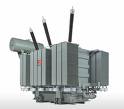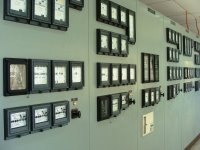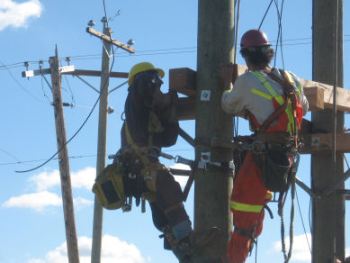Current systems and nominal voltages of electrical installations
Reasons for using different voltage values in electrical installations
The different power and the distance of the receivers of electricity from its sources determine the need to use different voltage values for the production, transmission and distribution of electricity. The further the user is from the electrical generators and the greater their power, the more appropriate it is to transmit electricity to them at a higher voltage.
Typically, electricity is generated at one voltage, converted to energy at a higher voltage, transmitted through electrical networks to a power supply system (SES), where the voltage is reduced to the required level. The power supply system (SES) is a part of the electrical system that includes supply and distribution networks, transformers, compensating devices and loads.
 Such a conversion is most simply and economically done in alternating current using transformers.In this regard, in many countries, the production and distribution of electricity is carried out on a three-phase alternating current system with a frequency of 50 Hz.
Such a conversion is most simply and economically done in alternating current using transformers.In this regard, in many countries, the production and distribution of electricity is carried out on a three-phase alternating current system with a frequency of 50 Hz.
In a number of sectors of the national economy, along with a three-phase current system, a constant (rectified) current system is used (non-ferrous metallurgy, chemical industry, electrified transport, etc.).
Nominal voltages of electrical installations
One of the main parameters of any electrical installation is its nominal voltage, i.e. voltage at which it is designed for normal operation.
 For electrical installations with direct (rectified) and alternating current with a voltage of up to 1.0 kV, the following nominal voltages are taken, V: Direct current 110, 220, 440, 660, 750, 1000. Three phases alternating current 220/127, 380/220, 660/380.
For electrical installations with direct (rectified) and alternating current with a voltage of up to 1.0 kV, the following nominal voltages are taken, V: Direct current 110, 220, 440, 660, 750, 1000. Three phases alternating current 220/127, 380/220, 660/380.
Voltage 380/220 V is widely used for power supply and lighting load. These networks are four-wire (three phases and a neutral wire) with a grounded neutral, which ensures automatic disconnection of the damaged phase when it is short to ground and therefore increases the safety of servicing these networks.
Voltage 660/380 V is used to power powerful (up to 400 kW) electric motors.
 Voltage 6.10 kV is used in industrial, urban, agricultural distribution networks, as well as to power motors with a power of several hundred to several thousand kilowatts.
Voltage 6.10 kV is used in industrial, urban, agricultural distribution networks, as well as to power motors with a power of several hundred to several thousand kilowatts.
Power plant generators produce electricity at a voltage of 11-27 kV.
Voltages of 35, 110, 220 kV are used in supply and distribution networks, as well as for powering powerful distribution substations in cities and large industrial enterprises, and voltages of 220, 330, 500, 750, 1150 kV are used when performing intersystem power lines and supply of electricity from power plants to large consumers located over long distances.

